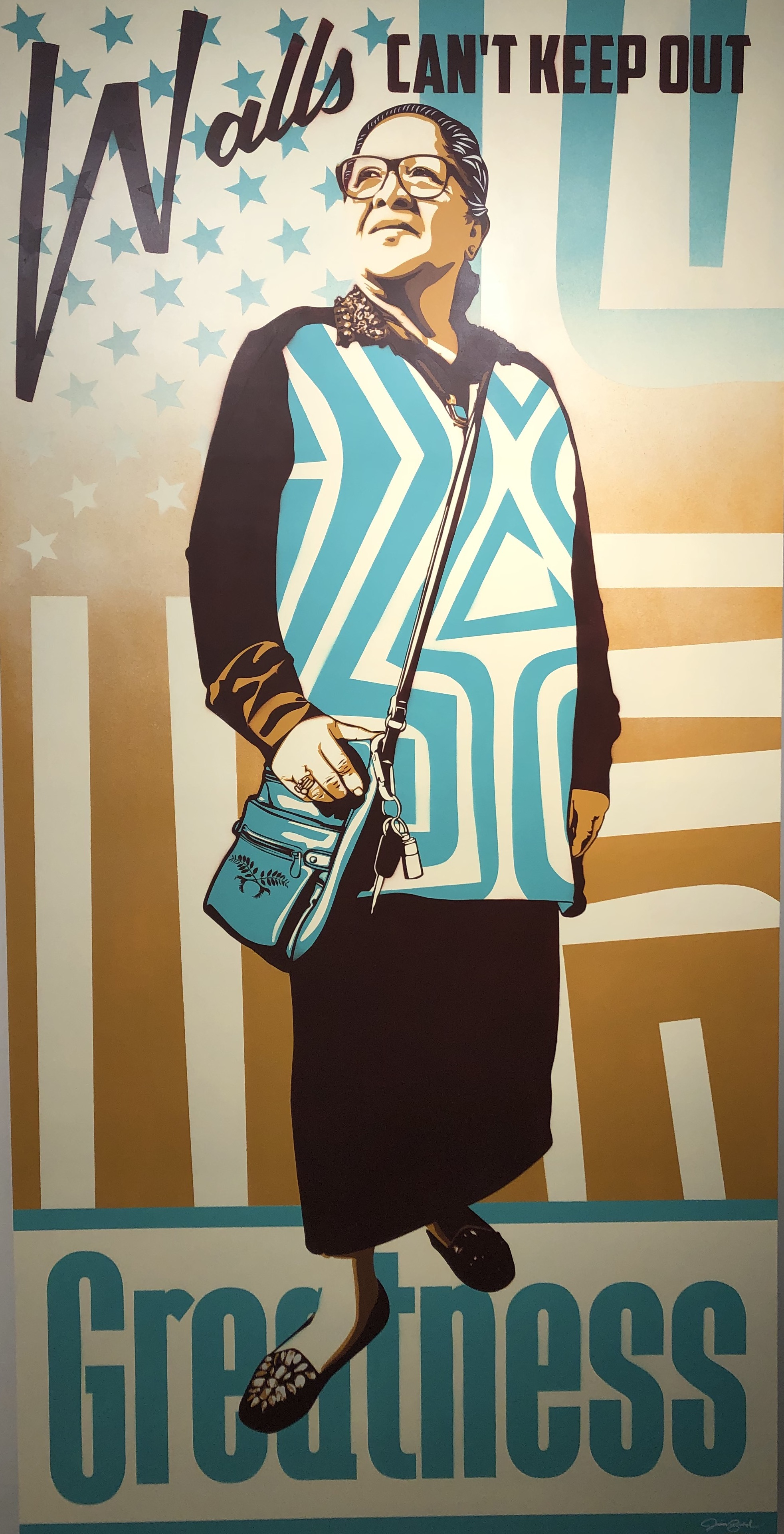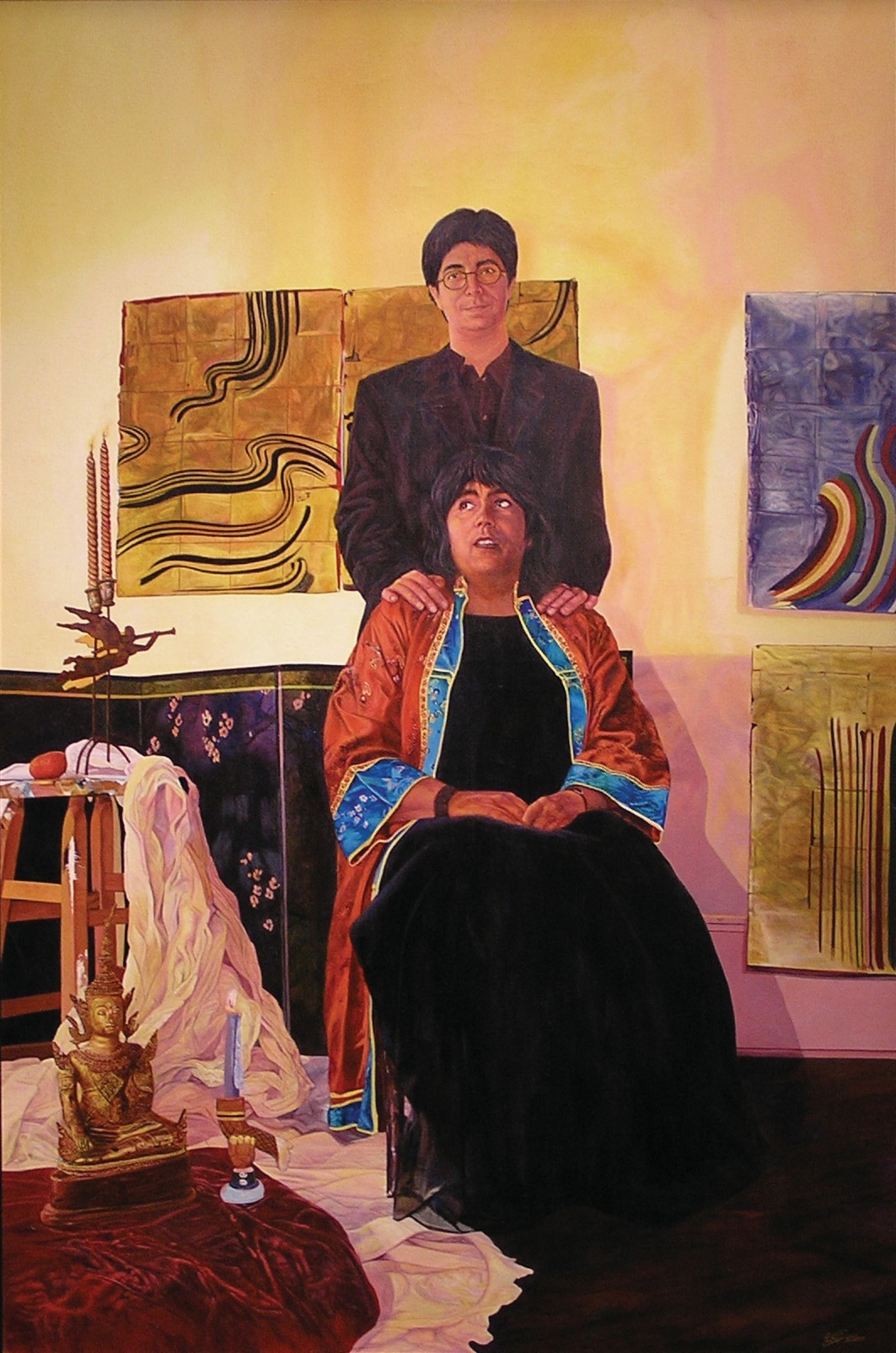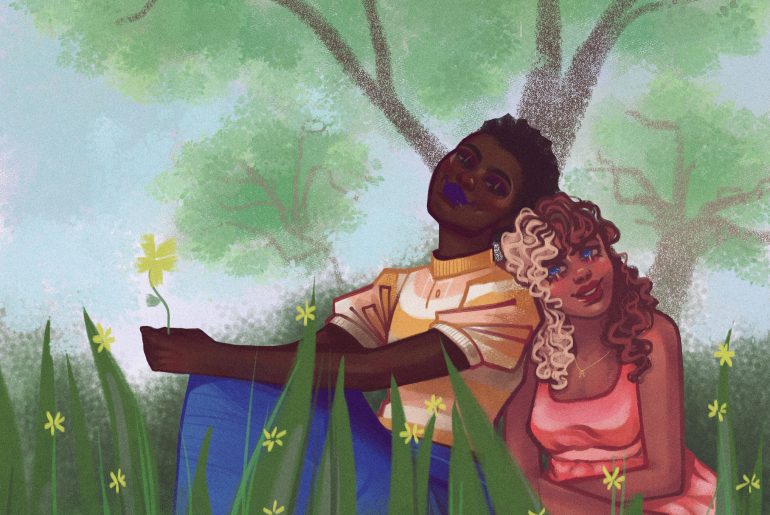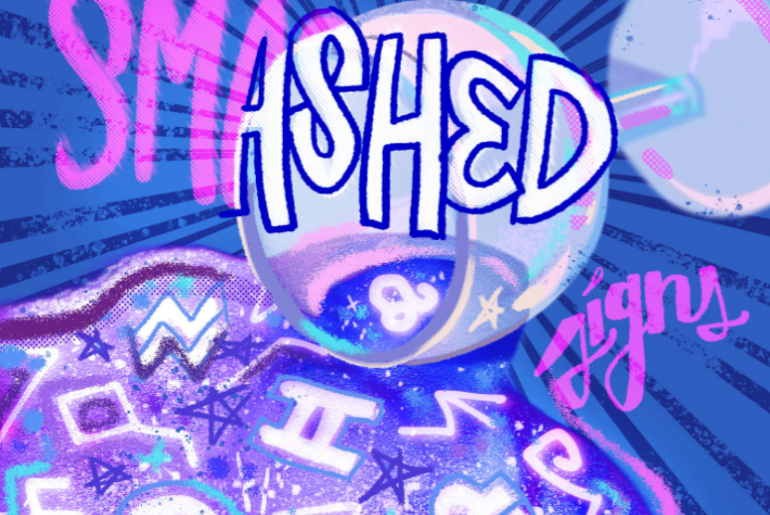Emboldened, Embodied is on show until February 16th at University of San Francisco’s Thacher Gallery. It is free and open to the public from 12-6pm daily.
It can feel like a breath of fresh air to step into an exhibition like Emboldened, Embodied, where every piece of art is made by a Bay Area woman of color. Upon walking in, Angela Hennesy’s installation, made mostly out of Black hair, including her own, stands regally and mysteriously before you. The surrounding art launches you into the dynamic, intergenerational conversation between QTPOC creatives. Lenore Chinn’s portrait illustrates her friend and fellow featured artist, Kim Anno. Jessica Sabogal’s murals hang next to an installation by her mentor and the prominent Chicana feminist, Yolanda López. Opposite this is a piece that Sabogal created with Shanna Strauss that honors the care and labor that queer women of color put into the people and communities around them.

Many pieces highlight the artist as an activist, like Jessica Sabogal’s mural Walls Can’t Keep Out Greatness. Sabogal complicates the meaning of the word “greatness” by standing a strong, dignified elder directly on top of the word. The flag background, which mirrors the pattern on the elder’s shirt, emphasizes the inherently political message about who belongs in the United States.
So many people are left out of the narrative of art history. What would it look like to focus exclusively on those voices and really give them center stage?”
–Professor Paula Birnbaum
Other pieces, like the paintings in Lenore Chinn’s Family Portrait series, depict the struggle that queer people of color face in everyday life. Chinn paints her friends in their homes and in familiar Bay Area spaces like San Francisco’s Legion of Honor. The portraits celebrate queer love and family despite queerphobia, but they also allude to the pain of living within the queer community during the AIDS epidemic.
Emboldened, Embodied was curated by a graduate level Museum Studies class led by Professor Paula Birnbaum at University of San Francisco. We got the opportunity to chat with Professor Birnbaum about the origins of the exhibit and her experience discussing race and gender in the classroom. “My training is in art history, and my publications have focused on women in the arts in the 20s and 30s, mainly in European art,” she shared. “In thinking about contemporary art, I really wanted to think more fluidly about how so many people are left out of the narrative of art history. What would it look like to focus exclusively on those voices and really give them center stage?”
Professor Paula Birnbaum
When you’re hiring, it’s important to bring in people who have been left out of positions of power so that they can then mentor the next generations.
We asked Professor Birnbaum to say more about her strategies in teaching about race in a graduate program that is primarily white. She responded, “As a white woman trained in the 90’s, I really need to step back and give the platform to people who haven’t had a major voice in the curatorial field and the art field. It’s important to bring guest speakers, to bring people to work with students.” To bring in wisdom based in lived experience, Professor Birnbaum invited the featured artists themselves to meet with and teach her students.
Like many university level classes that grapple with questions of identity, the students were confronted with how concepts like intersectionality and privilege have everyday consequences in people’s lives and are more than mere academic concepts. In thinking ahead about future projects, she has ideas for initiating more team-building exercises early on to help create space for personal reflection on intersectionality within the group. By encouraging students to consider their own identities and privileges, she hopes the exhibit will promote listening, grappling, and self-reflection.
For artist Kim Anno’s work, identity is always a salient feature, even when it is not the focus of the piece. Her series of films, Men and Women in Water Cities, depicts the resilience of young people in marginalized communities affected by rising sea levels. One of her goals was to “try to infuse queerness even in moments of post apocalypse because queerness is a part of cultural resiliency.” She shares, “My specialty is to infuse into every project I have some vain of queerness. It doesn’t have to be the whole subject; it’s just a natural part of the equation.”
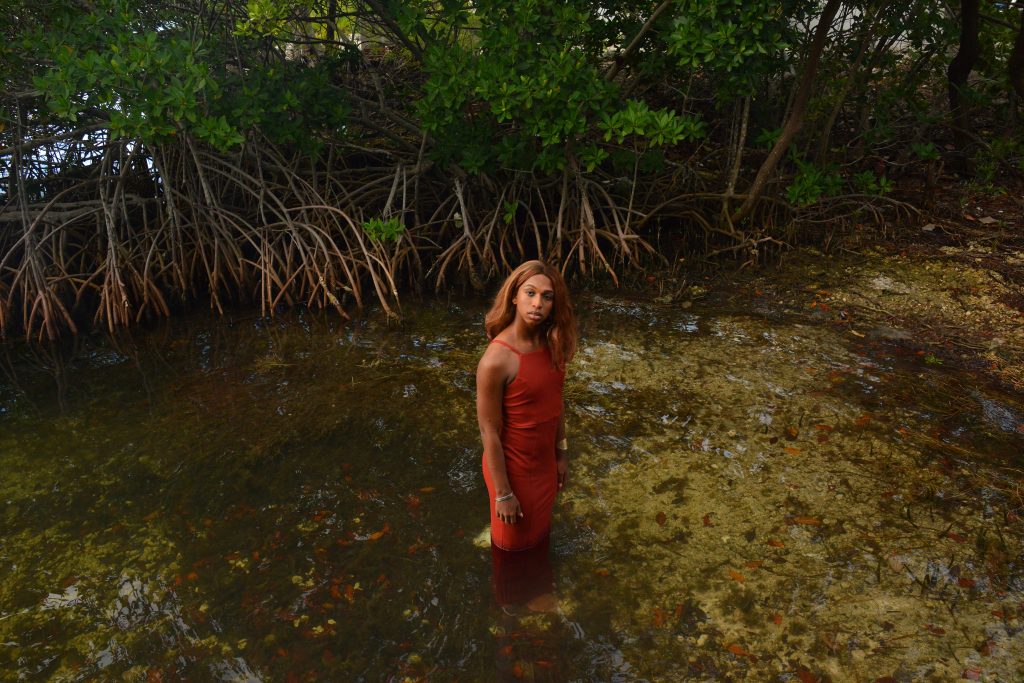
Anno’s advice to young queer and trans artists of color is “to get together, to make group projects, to raise money for those projects so you can pay yourself and get a job out of it, and to realize that changing the world is within your grasp.” Emboldened, Embodied shows that this is what generations of QTPOC artists before us have always done. They have built community for themselves when the rest of society rejected them. They have cared for each other unconditionally, even when their efforts have not been recognized. They have always stood by their truths, and they’ve inspired countless QTPOC youth to do the same.
I feel proud to be a queer artist.
–Kim Anno

